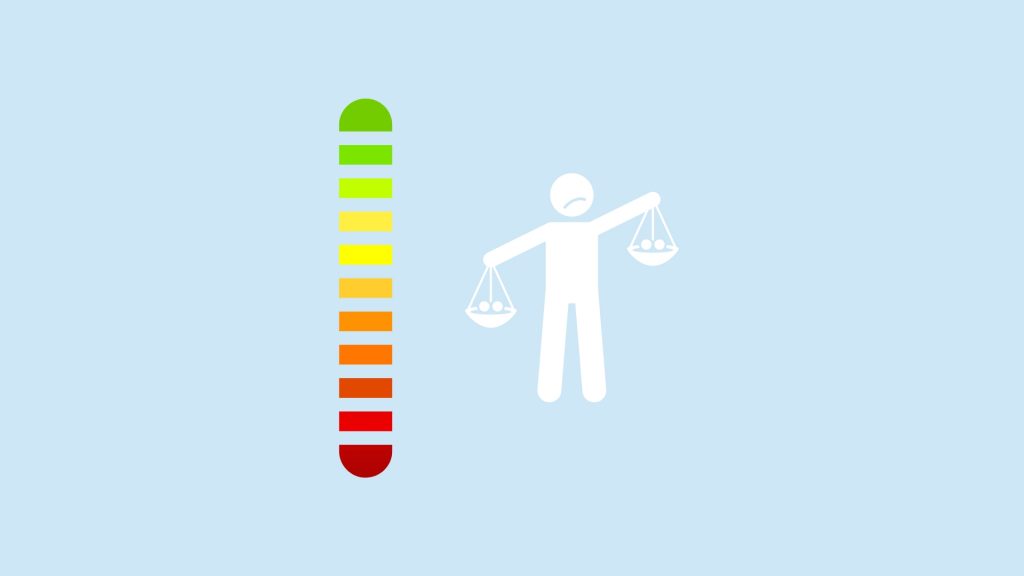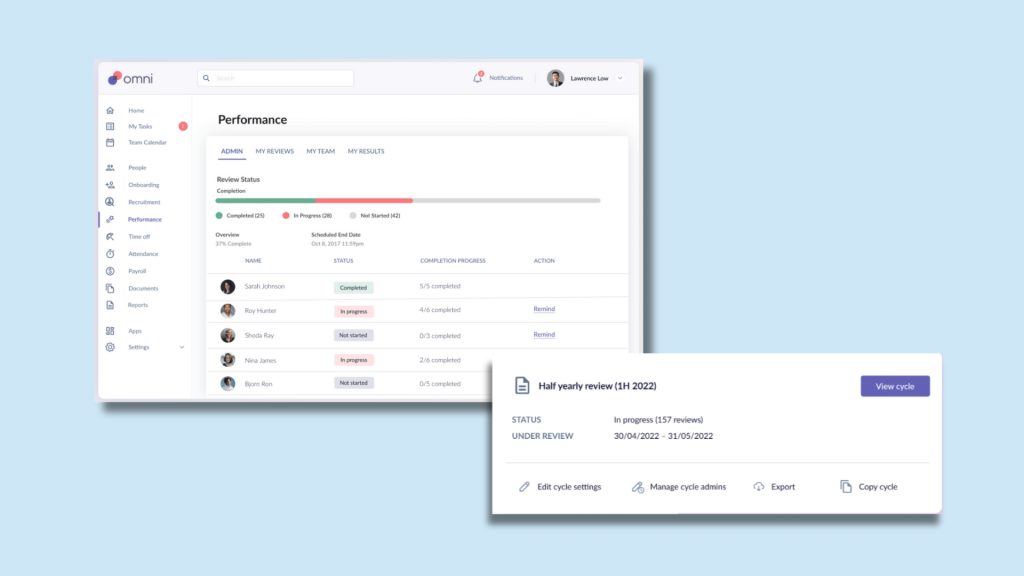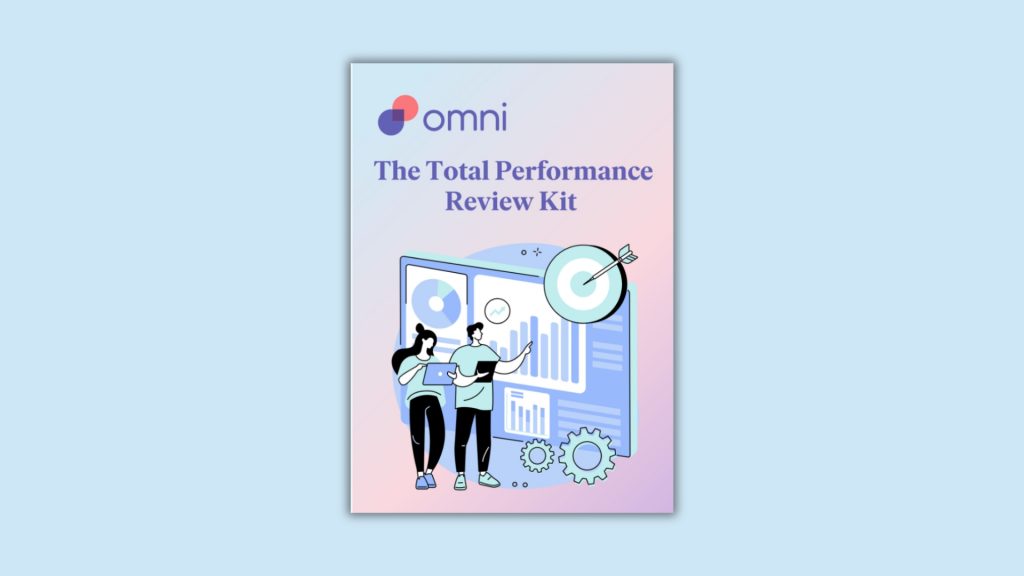Performance reviews are an irreplaceable cornerstone of talent management, offering your organization insights into employee performance, development opportunities, and areas for improvement.
But beneath the seemingly objective surface, a stealthy force often lurks — rating biases. These subtle predispositions, shaped by cognitive processes and unconscious tendencies, can taint the fairness and accuracy of performance evaluations.
These biases stem from the inherent complexities of human judgment and decision-making. Even well-intentioned managers can fall prey to rating biases, resulting in distorted evaluations that fail to capture the true essence of an employee’s performance. Worse, these biases can perpetuate inequalities and hinder diversity and inclusion efforts within organizations, all while taking a toll on morale and performance.
Here, we’ll take a look at the nature of rating biases, identify the various types, and explore solutions for mitigating bias so your team can avoid the worst of their impacts.
What are Rating Biases?
Rating biases are intricately woven into the tapestry of human judgment and decision-making. They are rooted in cognitive processes, psychological predispositions, and the complexities of perception. These biases manifest in many ways, but they all end up clouding a rater’s ability to provide an unbiased and accurate assessment of an employee’s capabilities, achievements, and potential.
According to psychological studies, up to 62% of employees believe that they detect bias in performance reviews. This underscores the pervasive nature of rating biases and their potential consequences for both employees and organizations. It’s crucial for your organization to recognize the existence of rating biases and take concerted efforts to mitigate their effects.
How Rating Biases Affect Performance Reviews

Rating biases have a profound impact on your performance reviews, shaping the outcomes and decisions that impact employee career progression, compensation, and overall job satisfaction.
When left unchecked, these biases can introduce disparities, hinder diversity and inclusion efforts, and create an environment that erodes trust and employee engagement. Understanding the types of rating biases that commonly manifest in performance reviews is necessary to addressing them and mitigating their influence.
6 Types of Rating Biases
By understanding the distinct characteristics of these biases, from the subtle halo effect to the pervasive central tendency bias, you can shed light on the complex dynamics at play and equip yourself with the knowledge needed to identify and mitigate their influence. Here are six types of rating bias for you and your organization to consider:
1. Halo and horns effect
The halo and horns effect occurs when a rater’s overall perception of an employee is heavily influenced by a single positive or negative characteristic.
For example, if an employee consistently meets deadlines and delivers high-quality work, the rater may perceive them as excelling in all aspects, overlooking areas where improvement may be needed (like teamwork, or behavioral issues). Conversely, if an employee makes a few mistakes, the rater may judge their overall performance harshly, ignoring their other strengths.
2. Leniency and severity bias
Leniency and severity biases refer to the tendency of some raters to consistently rate employees either too generously or too harshly. In the case of leniency bias, a rater may inflate ratings and provide excessively positive evaluations to most employees, making it challenging to differentiate between high and low performers.
On the other hand, severity bias leads to consistently low ratings, even when employees demonstrate satisfactory or exceptional performance, hindering their recognition and growth opportunities.
3. Central tendency bias
Central tendency bias occurs when raters avoid extreme ratings and tend to rate most employees as average or in the middle of the scale. This bias stems from a reluctance to differentiate between employees or fear of potential consequences.
As a result, performance evaluations lack the necessary granularity to distinguish exceptional performers from those who may require additional support or development.
4. Similar-to-me bias
Similar-to-me bias refers to the tendency of raters to favor employees who share similar backgrounds, characteristics, or beliefs.
This bias can manifest when raters feel more comfortable and identify more closely with employees who resemble them in terms of gender, ethnicity, educational background, or other demographic factors. Consequently, employees who differ from the rater in some way may face reduced opportunities for recognition and advancement.
5. Recency and primacy effect
The recency effect occurs when a rater’s evaluation is heavily influenced by an employee’s recent performance, overshadowing their performance throughout the entire review period.
For example, if an employee made a significant mistake close to the end of the evaluation period, the rater may disproportionately focus on that incident, disregarding their otherwise consistent performance throughout the rest of the period. Similarly, the primacy effect refers to a bias towards the initial impressions formed about an employee, which can significantly influence subsequent ratings.
6. Contrast effect
The contrast effect occurs when a rater’s evaluation of one employee is influenced by the performance of other employees they have recently reviewed. If a rater compares an employee to a particularly high-performing individual, the employee may appear comparatively weaker, leading to lower ratings.
Conversely, if the rater compares the employee to a low-performing individual, they may receive inflated ratings. This bias can distort the relative assessment of an employee’s performance.
Note: While these are some commonly observed rating biases, it’s essential to recognize that biases can manifest in many different forms and may differ depending on the context and individuals involved. Continual evaluation, awareness, and open dialogue are key to promoting a bias-free performance appraisal culture in your organization.
Mitigating Rating Biases
Recognizing the detrimental impact of rating biases on performance evaluations, is imperative to explore effective strategies to mitigate their influence.
By implementing proactive measures such as rater training programs, calibration sessions, and anonymous peer feedback, organizations can foster an environment of fairness, objectivity, and transparency. Here are some techniques you should consider:
Bias awareness training
Providing comprehensive training programs for raters is essential to raise awareness of rating biases and their potential impact. These programs can educate raters about the different types of biases, how they can influence evaluations, and strategies to mitigate their effects.
Through interactive workshops, case studies, and practical exercises, raters can develop a deeper understanding of biases and learn techniques to foster more objective assessments.
Standardized evaluation criteria
Establishing clear and well-defined performance review evaluation criteria is crucial to minimize the subjectivity and ambiguity that can contribute to rating biases. By providing specific guidelines and measurable benchmarks, organizations create a framework that supports consistent and objective evaluations.
Clear criteria help raters focus on observable behaviors, achievements, and competencies, reducing the potential influence of biases rooted in personal perceptions or assumptions.
Calibration and moderation
Conducting calibration sessions brings together raters to review and discuss evaluations collectively. During these sessions, raters can compare their assessments, discuss discrepancies, and align their understanding of evaluation criteria.
This process helps reduce inconsistencies and ensures a fair and standardized approach to performance reviews. By promoting open dialogue and collaborative decision-making, calibration sessions mitigate the influence of individual biases.
Multiple evaluators
Involving multiple raters in the evaluation process can help mitigate the impact of individual biases. By collecting input from different perspectives, organizations can ensure a more comprehensive and balanced assessment of employee performance.
Multiple raters provide a broader range of observations and insights, reducing the influence of any single rater’s biases and promoting a more accurate and fair evaluation.
Regular check-Ins and feedback
Implementing regular 1-on-1 check-ins and ongoing feedback sessions throughout the evaluation period can help maintain an ongoing dialogue between raters and employees.
Regular feedback allows for continuous performance discussions, clarifications, and adjustments, reducing the reliance on a single annual or semi-annual evaluation event. By engaging in frequent conversations, raters can develop a more holistic and accurate understanding of an employee’s performance, mitigating the impact of biases influenced by limited interactions.
Technology and data analytics
Leveraging performance management system software, like Omni, can support unbiased evaluations through standardized rating scales, real-time feedback mechanisms, and data-driven insights. Such tools enable organizations to identify and mitigate biases while fostering a culture of continuous improvement.
By combining these strategies, organizations can create a more robust and bias-resistant performance review process. It is important to remember that mitigating rating biases requires ongoing efforts, continuous learning, and a commitment to creating a culture of fairness, transparency, and growth.
Regular evaluation and feedback from employees can help identify areas for improvement and ensure that the performance review process remains unbiased and effective.
Run Bias-Free Performance Reviews with Omni

Rating biases have the potential to undermine the fairness and accuracy of performance reviews. By understanding the various types of biases that commonly affect evaluations and implementing strategies to mitigate their impact, organizations can ensure that performance reviews truly reflect employees’ abilities, achievements, and potential.
With the right tools and technology, organizations can automate and streamline the performance review process while minimizing rating biases. Omni’s highly customizable performance management tool offers a range of features to support bias-free evaluations. From standardized evaluation criteria and calibration tools to anonymous feedback mechanisms, Omni ensures a fair and objective review process that fosters employee growth and development.
Looking to make the most of performance reviews by removing bias and standardizing your approach? Chat with our team today, or download our free Total Performance Review Kit to get started on transforming your performance review practices.



